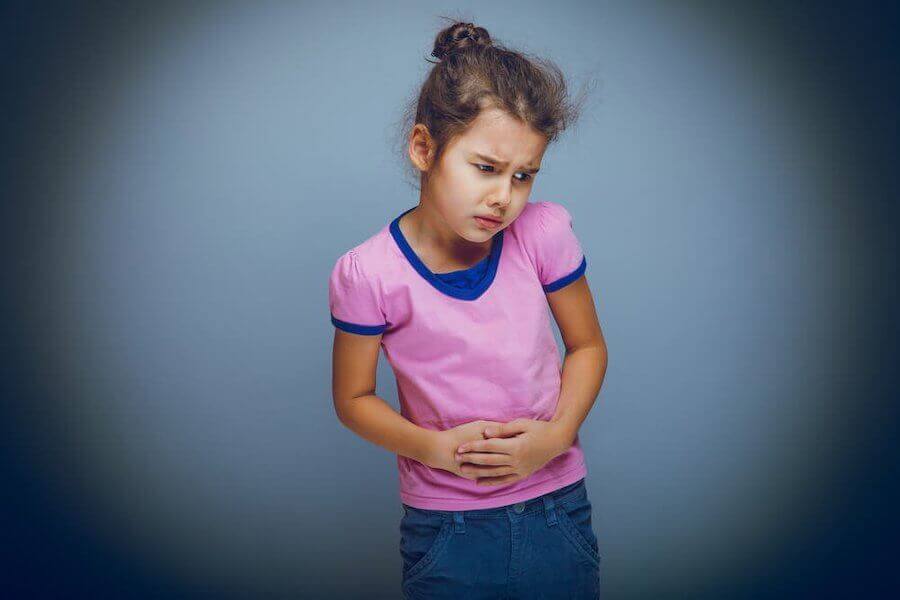Functional Abdominal Pain in Children

If your child suffers from stomach pain and you don’t see any reason, he might have functional abdominal pain.
It gets its name because it isn’t caused by a digestive disease or any other medical problem or clinical condition. However, it can get in the way of daily life.
What is functional abdominal pain in children?
Specialists aren’t certain where this condition comes from. However, it could be due to a malfunction between the intestines and nervous system, and even the immune system. It acts up in stressful situations or a hypersensitivity to pain.
Recurrent abdominal pain refers to 2 or more episodes of abdominal pain in a period of 3 months that interferes with normal activity.
Chronic abdominal pain (CAD) is one of the most frequent reasons for visits to the doctor’s office. It affects between 2-4% in children, and 7-25% in adolescents.
Data in Science Direct shows that 10-15% of school-age children suffer from this. Also, it peaks between ages 5 and 8, then comes back during adolescence.
How to diagnose functional abdominal pain in children
The diagnosis itself is complicated since it’s important to rule out any other condition. For example, you have to be sure your child doesn’t have irritable bowel syndrome, functional dyspepsia or abdominal migraines.
In addition, you have to be sure he doesn’t have any type of food intolerance. In these cases, your child would need special treatment.
You also need to find out an event that may have caused stress, like exams, moving, the death of a loved one, divorce of parents, etc. These can also affect the digestive system, irritating it and causing more or less severe pain.

Dangerous signs
To begin, your child will have a physical examination to determine his weight and general health. By touching the abdomen, the doctor can see if there’s tension, gas, or inflammation.
On the other hand, keep in mind that some symptoms mean that the pain is actually because of a certain illness. It’s important to tell your doctor if you see any of these signs:
- Fever without apparent cause
- Weight loss
- Anal injuries
- Traces of blood in the stool
- Frequent diarrhea
- Alterations in the child’s growth
- Abdominal pain on the right side
- Persistent vomiting
- Family history of any intestinal disease, ulcer, celiac disease
Treatment for functional abdominal pain
As you can see, this type of pain doesn’t lead to any serious situation or underlying problem. However, it will make your child feel uncomfortable.
Therefore, your doctor will tell you if you should use any medication. Paracetamol is usually very effective.

In addition, there are some remedies that can help relieve functional abdominal pain in children. For example, you could give them a massage or apply heat. Occasionally, stress management counseling may be necessary.
How to talk to children about this
It’s not about making them think that everything is in their head, since this would make them feel worse. However, you have to make it clear that they don’t have to worry so much, and that it’s important to learn how to manage pain.
Also, they need to understand that they don’t have any disease, even though they feel real pain. Explain that they are loved, and many other children feel the same way.
As you can see, functional abdominal pain in children is quite common. Although there is usually no need to worry, keep a close eye on them and make sure they don’t have any other conditions by talking with your doctor.
Generally, these symptoms go away as kids grow.
All cited sources were thoroughly reviewed by our team to ensure their quality, reliability, currency, and validity. The bibliography of this article was considered reliable and of academic or scientific accuracy.
- Aparicio Hernán, A. (2011). Dolor abdominal crónico y recurrente. Pediatria Integral
- Harris D., P., Godoy F., A., & Guiraldes C., E. (2001). Dolor abdominal, dispepsia y gastritis en pediatría: Rol del Helicobacter pylori. Revista Chilena de Pediatría. https://doi.org/10.4067/S0370-41062001000200002
- Mónica González, Y., & Francisca Corona, H. (2011). Dolor abdominal recurrente (DAR) o crónico en niños y adolescentes. Revista Médica Clínica Las Condes. https://doi.org/10.1016/S0716-8640(11)70410-2
This text is provided for informational purposes only and does not replace consultation with a professional. If in doubt, consult your specialist.








